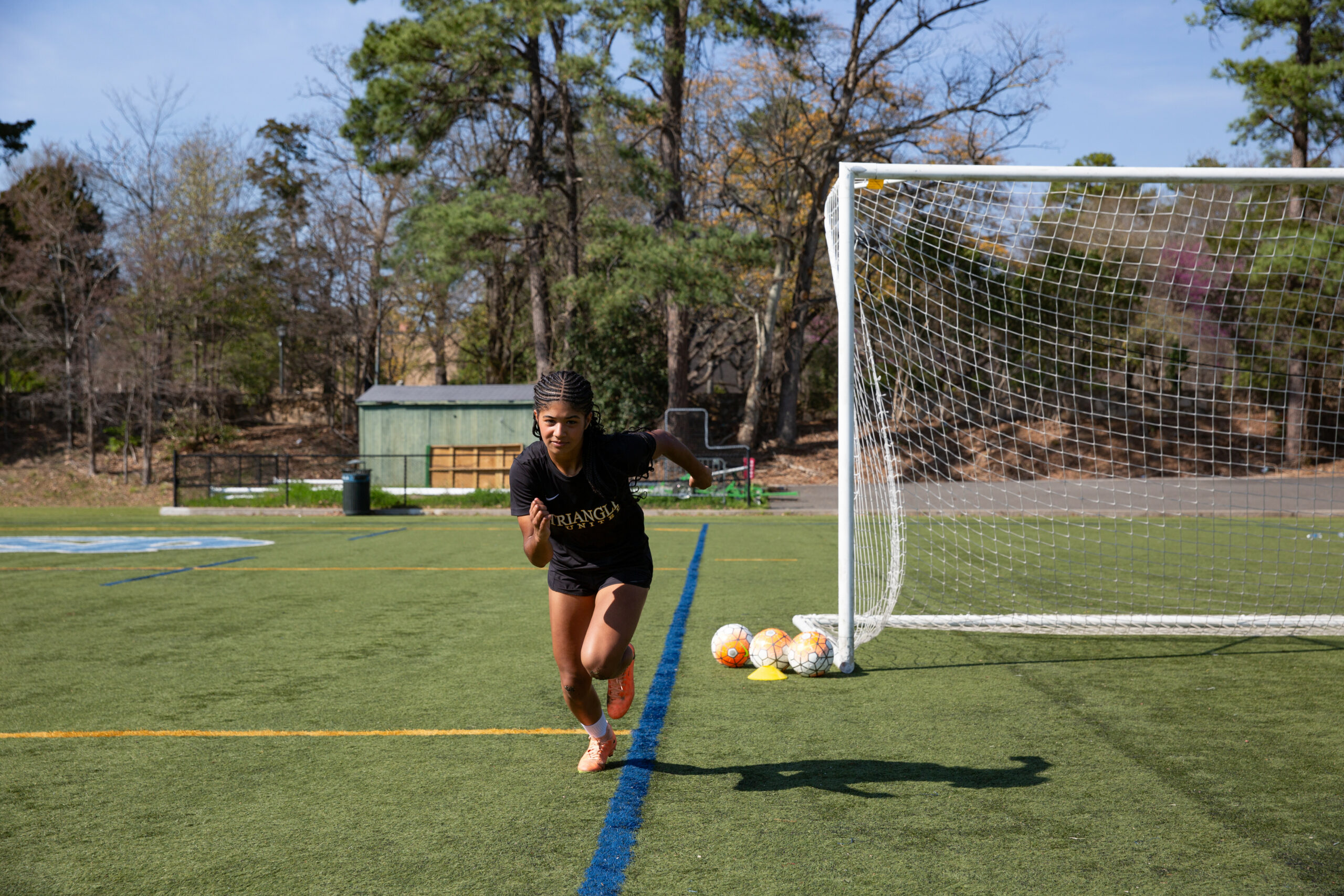Professionals may make it look easy running back and forth across the court, often for several hours at a time, but playing the sport of tennis requires a high degree of both strength and coordination. To perform at their best, a tennis player needs the right mix of endurance, speed and agility, as well as explosive strength and power.
To develop this, one cannot rely on playing tennis alone. Strength training is key. For club players, developing their level of overall of fitness can make all the difference in tennis performance. In a sport that relies on short, sharp sprints, and changing direction quickly and often, a player’s legs, core, shoulders, elbows and wrists must be strong, and limber.
With that in mind, here are five exercises to help elevate your tennis game.
Plyometric Lunge
Plyometric exercises help develop explosive strength and power, which is essential on the tennis court. This exercise involves taking the traditional lunge to a higher level of intensity. It will not only increase a your power, but will likewise develop muscular endurance through the hips and thighs.
Begin with feet shoulder width apart, then step forward with your right foot. Lower your body until your right thigh is parallel to the ground and rear knee is nearly touching it. This is the lunge position. As you reach it, surge upward as high as you can alternating your legs before landing softly in with your left thigh parallel to the ground and rear knee nearly touching it. Repeat for the desired amount of repetitions.
Torso Rotation
To hit a tennis ball as fast and hard as possible, the ability to rotate the upper body is paramount. The more power in your upper body the faster and harder an opponents shots can be returned.
Face the cable machine or exercise band anchor and grab the handle with both hands. Assume a tennis stance, legs shoulder width apart and bent at the knees. With your elbows slightly bent, swing the cable as if it were your racquet and you were performing a double handed forehand. Slowly return to the starting position and repeat.
Lateral Shuffles
This is a fantastic tennis-specific exercise designed to strengthen the hips and legs and enhance your balance, footwork and the ability to change direction quickly. While moving laterally, the hips, legs, calves, and shin muscles all work at an increased intensity. When performed in a half squat position the glutes are forced to work at a high level as well.
Stand with your feet hip-width apart, knees bent, chest upright, and elbows bent at a 90-degree angle. Take a wide step to the left, then quickly bring your right foot to meet your left and repeat. Perform this exercise over a span of 10 to 15 feet each direction as quickly as you are able.
External Shoulder Rotation
Training your rotator cuff isn’t like training your biceps. Rather than maximal strength, the rotator cuff muscles need endurance, as they need to work every time you move your arm. Strengthening them is also a good way to prevent injury. The focus with this exercise should be high repetitions with a very low resistance. Elastic exercise bands are ideal for this.
Anchor the band at elbow height. Grasp the handle with the arm furthest from it. Keep your elbow tight against your side with the forearm against your stomach. Externally rotating the shoulder, pull the cable away from your body. Return to starting position and repeat.
Back Extensions
Lower back pain can be common among tennis players, making back extensions an important part of an off court fitness regimen. This exercise helps to strengthen your lower back, an essential element of a solid core. Performing it will increase your overall ability to coordinate the twisting, rotating and bending movements common during play. Injury prevention is also a benefit.
Lay flat on your stomach, arms at your sides palms up. In a smooth motion, lift your upper body up a few inches off the floor, using your lower back muscles, and then gradually lower it back to the floor. You shouldn’t try to crunch or jerk your lower back, but rather perform a slow, controlled movement up and then down. Repeat for the desired amount of repetitions.
For more information or training advice on how to improve your fitness for the game of tennis or the game of life please contact us at Empower Personalized Fitness.



